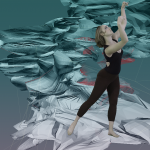Esteban Garcia Bravo
Most Recent Affiliation:
- Purdue University, Computer Graphics Technology
Location:
- United States of America
Bio:
Esteban García Bravo holds a PhD in Computer Graphics from Purdue University, a MFA in Studio Arts from Purdue University and a BFA in Time Based and Electronic Media Art from Universidad de los Andes, Bogotá. His research on computer art history and digital media art practices has been featured in the annual meetings of international organizations such as SIGGRAPH, ISEA and Media Art Histories-MAH.
Art Papers Jury Member:
Art Paper Reviewer:
- SIGGRAPH 2017: Unsettled Artifacts: Technological Speculations from Latin America
- SIGGRAPH 2016: Data Materialities
Writings and Presentations:
-
Title:
Yturralde: Impossible Figure Generator
Writing Type: Paper
Author(s):
Exhibition: SIGGRAPH 2015: Hybrid Craft
Abstract Summary:This research highlights José María Yturralde’s most significant involvement and contributions to early computer art from 1968 to 1973. Yturralde collaborated with artists and scientists to expand and redefine his understanding of shapes, and explored ways that the mainframe computer could be used as a tool for complementing his art practices. He is known for developing a mathematical model with which he was able to create a highly sophisticated program where Penrose geometries could be recombined algorithmically. However, there is limited evidence and access to the code of the actual software. The authors’ goal is to further understand Yturralde’s contribution by developing a re-significance of his model, which they have accomplished through a modern interpretation of manuscripts.
Title: The Interactive Image: A Media Archaeology Approach
Writing Type: Paper
Author(s):
Exhibition: SIGGRAPH 2017: Unsettled Artifacts: Technological Speculations from Latin America
Abstract Summary:This paper examines the history of the influential Interactive Image computer graphics showcase, which took place at museum and conference venues from 1987 to 1988. The authors present a preliminary exploration of the historical contexts that led to the creation of this exhibition by the Electronic Visualization Lab (EVL), which included the integrated efforts of both artists and computer scientists. In addition to providing historical details about this event, the authors introduce a media archaeology approach for examining the cultural and technological contexts in which this event is situated.
Title: Bodygraphe
Writing Type: Sketch / Art Talk
Author(s):
Exhibition: SIGGRAPH Asia 2016: Mediated Aesthetics
Abstract Summary:Bodygraphe is an interactive, visual music application that unifies gestural computing with live performance art. Dancers become instruments and conductors that wholly generate graphics and sounds that correspond with their movements in real time. This video is the result of a process in computational aesthetics that explores the relationship between the body and form. Most specifically, we were inspired by visual art avant gardes that prioritized expressive geometry, such as the Neo-concrete movement of the 1950s. Through this project, we seek to make an aesthetic statement while also offering new implications for research regarding the interconnectivity between body and technology
Role(s):





